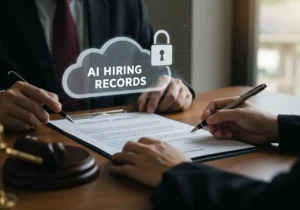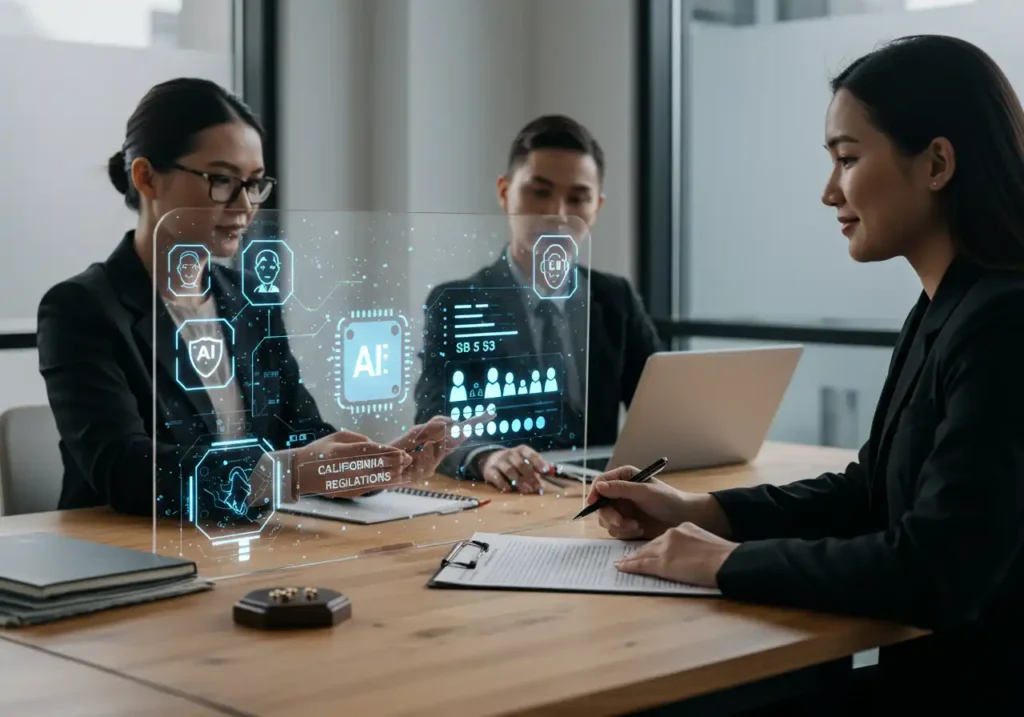California has once again taken the lead in defining how artificial intelligence (AI) interacts with everyday life. Starting October 1, 2025, new AI employment rules from the California Civil Rights Council (CRC) officially take effect. These regulations, guided by Senate Bill 53 (SB 53), establish clearer boundaries for how employers can use AI in hiring, promotions, and workplace evaluations.
Known collectively as the California AI Employment Regulations, these measures aim to ensure that technology helps build fairer workplaces rather than reinforce bias. For California — the birthplace of much of the world’s AI innovation — the message is clear: progress and ethics must evolve together.
Understanding California’s New AI Rules for Employers
 AI has quietly become part of how companies recruit and manage employees. Automated decision systems (ADS) now screen resumes, predict performance, and even score job interviews. But as these systems grow more powerful, lawmakers are worried about potential discrimination or lack of transparency.
AI has quietly become part of how companies recruit and manage employees. Automated decision systems (ADS) now screen resumes, predict performance, and even score job interviews. But as these systems grow more powerful, lawmakers are worried about potential discrimination or lack of transparency.
Under the new CRC framework, employers using AI-driven tools must follow specific requirements designed to uphold California’s Fair Employment and Housing Act (FEHA). The goal is to prevent biased outcomes and ensure that job seekers have the right to understand how these systems impact them.
Key Provisions of the CRC AI Employment Regulations
- Bias Audits: Employers must conduct regular testing of AI systems to ensure decisions do not unfairly disadvantage protected classes such as race, gender, or age.
- Transparency Notices: Applicants and employees must be informed when an AI or automated system is used to evaluate or decide employment outcomes.
- Recordkeeping: Employers must keep records of how AI systems are used — including data inputs and decision outputs — for at least four years.
- Shared Liability: Both employers and third-party vendors that design or operate these systems can be held accountable for violations.
- Right to Explanation: If a candidate is adversely impacted, they can request an explanation of how the AI contributed to that decision.
These rules are meant to make AI systems explainable, traceable, and subject to the same civil rights standards that govern traditional human-led hiring practices.
Why California Introduced These AI Regulations
California’s move stems from growing global concern about algorithmic bias. In recent years, studies have shown that some automated hiring tools unintentionally penalize women, older applicants, or candidates with non-traditional resumes. The CRC’s framework aims to eliminate these issues before they become systemic.
By pairing SB 53’s Frontier AI oversight with employment-specific guidelines, the state reinforces its role as both a tech hub and a champion of worker rights. This is not just regulation — it’s California’s attempt to ensure AI benefits people, not just businesses.
What This Means for Employers
For California businesses, compliance will require both cultural and operational changes. Organizations must rethink how they adopt technology, evaluate its fairness, and communicate decisions to applicants.
1. Policy Updates
Employers must revise HR policies to explicitly reference AI use and include fairness reviews in hiring and performance evaluations.
2. Vendor Management
Companies using third-party recruitment tools will need to ensure vendors comply with CRC standards. Contracts should include audit rights and shared liability clauses.
3. Data Transparency
HR teams must maintain documentation showing how AI decisions are made — from resume parsing logic to interview scoring metrics.
4. Staff Training
Training HR and tech staff about bias detection, data ethics, and legal obligations will become part of best practices.
Benefits for Job Seekers and Employees
These new rules also benefit applicants and workers by providing greater control and visibility over the hiring process.
- Applicants will know when a machine, not a person, makes decisions about their application.
- Workers can challenge unfair or unexplained outcomes caused by algorithmic tools.
- Transparency increases trust and ensures that qualifications, not biased data, drive opportunity.
In essence, California’s AI employment law seeks to humanize technology — making sure innovation supports equality rather than undermines it.
Challenges Businesses Might Face
While the regulations promote fairness, they also bring challenges:
- Implementation Costs: Smaller businesses may find it costly to audit AI tools or maintain detailed logs.
- Complex Vendor Chains: When AI decisions are outsourced, tracing accountability becomes harder.
- Ambiguous Standards: Regulators will still need to define what counts as an acceptable audit or explanation.
However, many experts believe these growing pains will lead to stronger, more trustworthy technology in the long run.
How California Leads the Nation on AI Policy
 California’s AI employment rules follow a consistent trend of tech accountability. From AI disclosure laws (SB 243) to renewable innovation, the state has built a model for balancing technology with public good. Other states, including New York and Illinois, are already studying the CRC’s approach as a template for their own workforce AI regulations.
California’s AI employment rules follow a consistent trend of tech accountability. From AI disclosure laws (SB 243) to renewable innovation, the state has built a model for balancing technology with public good. Other states, including New York and Illinois, are already studying the CRC’s approach as a template for their own workforce AI regulations.
By embedding ethics into technology law, California proves that leadership isn’t just about innovation — it’s about integrity.
Preparing for the Future
As AI becomes central to decision-making across industries, policies like these will help set the tone for transparency, accountability, and equity nationwide. Employers who adapt early will not only avoid legal risks but also strengthen their brand reputation as fair and forward-thinking organizations.
California’s employment AI framework offers a glimpse into the future — one where technology enhances opportunity, protects workers, and aligns innovation with humanity’s best interests.

